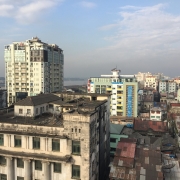What are the main aims of economic development?
Nicholas Tarling’s three aims
According to the distinguished historians, Nicholas Tarling and Norman Owen, who published The Cambridge History of Southeast Asia, there are three aims of economic development: growth, equity and nationalism. We will be examining the significance of these aims individually to understand why there is a high degree of government intervention in the post-independence Southeast Asian states.
Topic of Study [For H2 History Students]:
Paper 2: Economic Development after Independence
Section B: Essay Writing
Theme II Chapter 1: Paths to Economic Development
Aim #1: Economic Growth
One of the most common aims of economic development involves economic growth, which is typically measured in the monetized value of the goods and services produced within a country, seen in terms of Gross Domestic Product (GDP).
To assess the economic performance of a country, it is important to examine the ability of governments to achieve short-term and long-term economic growth.
Also, another relevant aspect is the percentage share of GDP contributed by the three sectors: agriculture, industry and finance. As a country advances, a large proportion of growth is derived from the secondary and tertiary sectors (industry and finance).
Aim #2: Economic Equity
The second aim involves the reduction of income gap between the rich and the poor. In some Southeast Asian states, leaders advocate the equality of opportunity, which can be measured by the percentage of population that suffering from poverty.
As such, their policies are extensively focused on a more equitable distribution of resources. For example, governments introduce legislation to facilitate land reforms for state acquisition and re-distribution to rural households.
Aim #3: Economic Nationalism
The third aim refers to the indigenization of wealth and production to reduce foreign ownership of domestic sectors of economy. Following the process of decolonization, many Southeast Asian states sought to reduce foreign influence in their economic development.
This aim is usually achieved by implementing policies of nationalization. The governments impose strict controls to limit or eradicate foreign ownership. At same time, state-owned enterprises are formed to replace these foreign companies. For example, in Indonesia, the Dutch assets in petroleum were nationalized, thus forming the Permina, known as the state-owned oil company. Later, it was renamed as Pertamina.
What can we learn from this article?
Consider the following question:
– The pursuit of economic growth is the most important aim that Southeast Asian governments should prioritize on after independence. Discuss. [to be discussed in class]
Now that you have examined the three aims of economic development, you should look for practice questions to apply your knowledge. You can also join our JC History Tuition as we provide summary notes and practice questions (with reference answers) to demonstrate the applicability of knowledge for examinations.
The H2 and H1 History Tuition feature online discussion and writing practices to enhance your knowledge application skills. Get useful study notes and clarify your doubts on the subject with the tutor. You can also follow our Telegram Channel to get useful updates.
We have other JC tuition classes, such as JC Math Tuition and JC Chemistry Tuition. For Secondary Tuition, we provide Secondary English Tuition, Secondary Math tuition, Secondary Chemistry Tuition, Social Studies Tuition, Geography, History Tuition and Secondary Economics Tuition. For Primary Tuition, we have Primary English, Math and Science Tuition. Call 9658 5789 to find out more.





